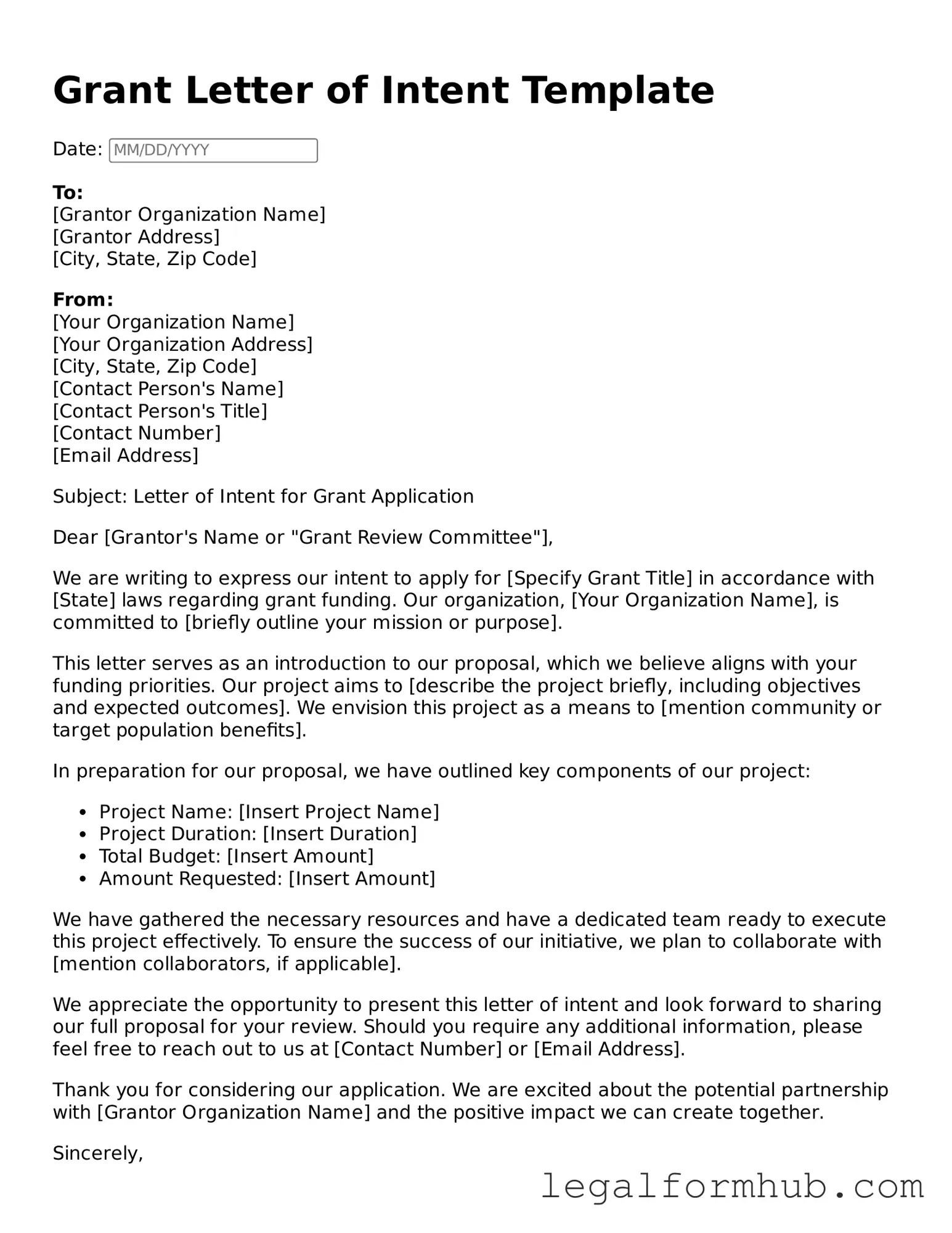The Grant Proposal is a formal request for funding, outlining the project's objectives, methodology, and budget. Like the Grant Letter of Intent, it serves to communicate the intent to seek financial support. However, the proposal goes into greater detail, providing a comprehensive plan for the project's execution. While the Letter of Intent is often a preliminary step, the proposal is a more in-depth document that requires thorough research and preparation.
For those considering homeschooling in California, it's essential to understand the role of the Homeschool Letter of Intent, as it formally alerts the school district about the choice to educate at home. This initial step ensures compliance with state regulations, just as documents like the Grant Application and Proposal Narrative are vital in their respective fields. Parents can find resources and templates to assist with this process on OnlineLawDocs.com, which provides guidance on completing the form accurately and effectively.
The Concept Paper is another document similar to the Grant Letter of Intent. It presents an idea or project in a concise format, typically one to three pages long. Both documents aim to gauge interest from funders, but the Concept Paper focuses on the project's core concept and potential impact, while the Letter of Intent signals a more formal commitment to apply for funding.
The Executive Summary is a brief overview of a larger document, often used in grant applications. It summarizes the key points of the full proposal, including objectives, methods, and budget. Similar to the Grant Letter of Intent, the Executive Summary aims to capture the attention of the reader quickly. However, it is usually part of a larger proposal, whereas the Letter of Intent stands alone as an initial communication of intent.
The Statement of Need outlines the problem or issue the proposed project aims to address. Like the Grant Letter of Intent, it emphasizes the importance of the project. However, the Statement of Need provides more detailed evidence and data to support the necessity of the project, making it a critical component of grant proposals.
The Project Description provides a detailed outline of the project’s goals, objectives, and methods. While the Grant Letter of Intent indicates a desire to pursue funding, the Project Description elaborates on how the project will be implemented. Both documents are essential in the grant application process, but they serve different purposes in terms of detail and depth.
The Budget Narrative explains the financial aspects of a project in detail. It complements the Grant Letter of Intent by providing clarity on how funds will be allocated. While the Letter of Intent expresses the intention to seek funding, the Budget Narrative breaks down the costs associated with the project, ensuring transparency and accountability.
The Memorandum of Understanding (MOU) outlines the collaboration between parties involved in a project. Like the Grant Letter of Intent, it establishes a mutual agreement and shared goals. However, an MOU typically includes specific roles, responsibilities, and terms of collaboration, making it a more formal agreement compared to the preliminary nature of a Letter of Intent.
The Letter of Inquiry (LOI) is a brief document sent to funders to introduce a project and determine their interest in a full proposal. Similar to the Grant Letter of Intent, it serves as an initial communication. However, an LOI is often more focused on establishing a dialogue with potential funders, while the Letter of Intent indicates a more definitive intention to apply for funding.
The Funding Application is the formal submission for financial support. It is similar to the Grant Letter of Intent in that both documents are part of the funding process. The Funding Application, however, requires a complete set of documents, including the proposal, budget, and supporting materials, whereas the Letter of Intent is a simpler, preliminary document that expresses intent to apply.
